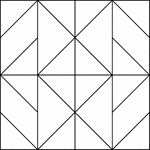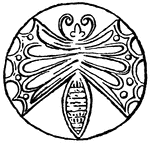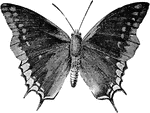
Mourning Cloak
A butterfly native to Eurasia and North America. It has wings that are dark red with a yellow border.

Noctuina
"The Noctuina form an eceedingly large group of nocturnal moths, although even here there are a few…

Noctuina
"The Noctuina form an eceedingly large group of nocturnal moths, although even here there are a few…

Orange Dog
The Orange Dog, caterpillar of Papilio creshontes, with osmateria, or scent organs, extended.

Pamphila Ethlius
In this latter series the fore-wings are much more pointed than in the other, and the body is proportionately…
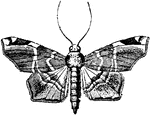
Pyralidina
"The Pyralidina are a group of small moths readily distinguished by their long slender bodies and large…
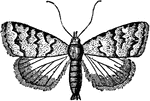
Pyralidina
"The Pyralidina are a group of small moths readily distinguished by their long slender bodies and large…
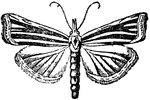
Pyralidina
"The Pyralidina are a group of small moths readily distinguished by their long slender bodies and large…

Pyralidina
"The Pyralidina are a group of small moths readily distinguished by their long slender bodies and large…
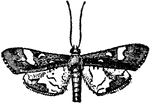
Pyralidina
"The Pyralidina are a group of small moths readily distinguished by their long slender bodies and large…

Rosette
"A circular plaque decorated with a rosette is very similar to those found at Mycenae." —The Encyclopedia…

Satyrus Balder
"The Satyridae are found in every quarter of the globe, and seem equally at home on open plains, in…
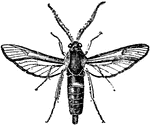
Sesiidae
"Clear-winged moths, Sesiidae, day-fliers, and looking more like bees, wasps, and ichneumons which they…

Skipper
"The Hesperidae or Skippers, so called from their jerky hesitating mode of flight, show, in the thickness…

Skipper
"The Hesperidae or Skippers, so called from their jerky hesitating mode of flight, show, in the thickness…

Small White Cabbage Butterfly and Caterpillar
The caterpillar is dark green with a line of yellow and yellow spots down the sides. The caterpillar…

Tineina
"The Tineina contain the smallest of the Lepidoptera, and are best known as clothes moths. These clothe…

Tineina
"The Tineina contain the smallest of the Lepidoptera, and are best known as clothes moths. These clothe…
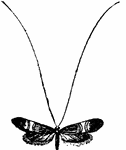
Tineina
"The Tineina contain the smallest of the Lepidoptera, and are best known as clothes moths. These clothe…

Tortricina
"The Tortricina include a great number of small moths exceedingly injurious to orchard and other trees.…
